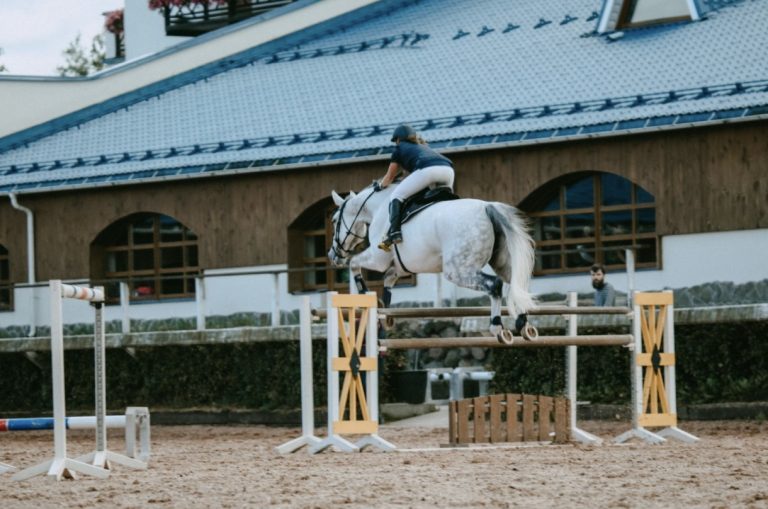You can build a horse jumping arena from scratch or materials lying around the yard. When building from scratch, it is essential to incorporate design features to make the riding experience safe and comfortable for both horse and rider. Packed soils, sand, and gravel are all suitable materials for drainage.
Dirt should be packed firmly, but not to the point of being stony or causing discomfort to a horse’s legs. Here are some other considerations:
1. Determine Your Purpose
Before starting any construction, it is important to decide why you need an arena. Are you planning on showing or training your horse, practicing show jumping courses, riding in the fields within reach of the home?
The more practice areas available for a horse, the less likely it will become bored with its surroundings. On the other hand, it is best not to have too many areas to choose from since horses can become easily confused when presented with too many choices.
2. Gather Materials
You will need the following materials to build a jumping arena:
- Packed soil or sand (both are ideal for drainage)
- Gravel (helps keep the arena dust-free)
- Water
- Fence posts or portable horse jumps
Once everything is gathered, it’s time to get started. Mark a rectangle in the earth to serve as the base of your arena and fill it with gravel. It should be wide enough to accommodate a horse and rider’s stride comfortably.
Once the gravel is in place, water will have to be added over the next few weeks. This will help compact the ground and allow for drainage at the same time. Once drained, it can be used as an arena for jumping horses.
Don’t forget to add a top layer of soil, which will keep the dust down and add beauty and strength to an arena.
3. Other Arena Considerations
In addition to safety concerns, other considerations should be taken into account when designing your horse jumping arena. These include:
Sun exposure and wind direction: They are essential because they can affect how you ride in different weather and the comfort of your horse. The best time to ride is when it is neither too hot nor too windy, so be sure to build your arena accordingly.
Fencing options: They would include, of course, keeping your horse in an enclosed area. If you choose to fence your arena, it is best not to use wire fencing because horses can easily stick their legs or break them when running at full speed.
Another safer option would be horse show jumps, which are portable and arranged in different patterns depending on your need to practice.
4. Capacity of an Arena
It’s also important to remember that arenas need to be built with a specific capacity, which means the space they can accommodate safely. If you are making an arena for your horse or horses, then a jumping arena should have a minimum width of 30 feet and a length of 40 feet.
However, if you plan on building a show jumping arena for competitions, the minimum width is 20 feet and the length of 50 feet per horse. However, these dimensions can vary depending on whether or not the horses are going to be jumping as a team.
As you can see, building an arena for jumping horses is a big project that requires a lot of work and planning. However, if your reason for making one is because you want to have fun with your horse or show him off at competitions, it will be well worth the effort.


0 Comments